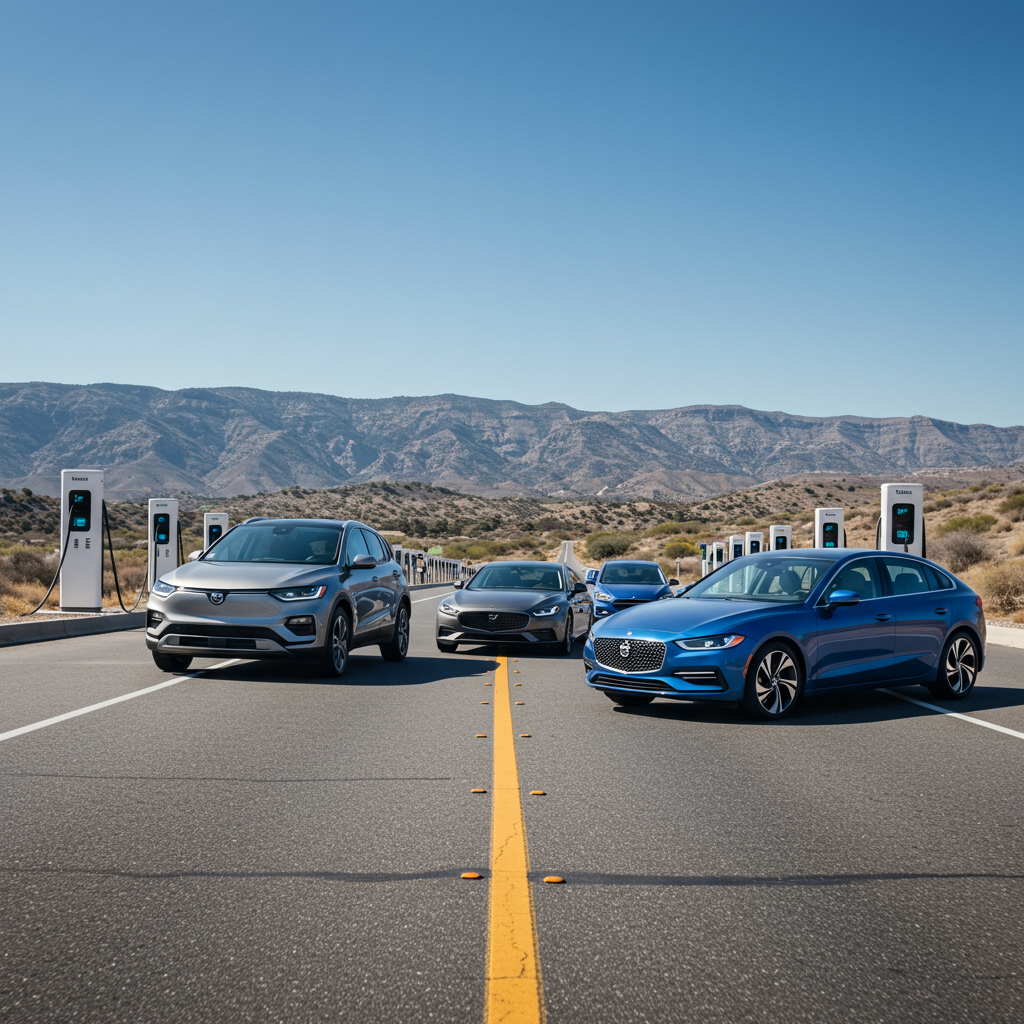Elon Musk’s ambitious vision of a Tesla driverless taxi fleet has long captivated investors and fans, but it has also been marked by repeated delays. After years of anticipation and missed deadlines, Tesla appears to be taking a significant step toward making its “robotaxi” promise a reality with a planned test launch in Austin, Texas. This initiative comes at a crucial time for the electric vehicle giant, which is facing headwinds from falling sales, increased competition, and volatile investor sentiment.
Years of Promises, Now a Test Run
Musk first declared that autonomous Tesla “robotaxis” would be on the road in 2020, a promise made back in 2019. That timeline, like subsequent ones, didn’t materialize. Even as recently as January 2023, he projected that over a million robotaxis would be operational “next year for sure.” Despite these unfulfilled forecasts, the company is now reportedly initiating a small-scale test.
The Austin pilot program is set to begin modestly, potentially starting this Sunday with a limited fleet of just 10 to 12 vehicles operating within a restricted area. While this is a far cry from a million cars, Musk’s strategy is centered on rapid expansion. If the Austin test proves successful, the plan is to quickly ramp up the fleet, expand to other cities, and eventually deploy hundreds of thousands, potentially reaching a million vehicles in the coming year or so.
A High-Stakes Gamble Amidst Challenges
The launch of a robotaxi service is particularly critical for Tesla as the company navigates a challenging period. Sales have reportedly been impacted by boycotts linked to Musk’s political stances, while rival automakers are increasingly offering competitive electric vehicle models, eroding Tesla’s market share. Investor confidence has also been volatile, notably after a significant stock value drop tied to a public dispute between Musk and federal regulators who could influence the deployment of autonomous vehicles. Though the stock has recovered somewhat, demonstrating the enduring support of long-term shareholders who have seen massive gains over the past decade, a new growth engine is highly desired.
Navigating a Competitive Landscape
Tesla isn’t alone in the race for driverless taxi dominance. Competitors like Waymo, an Alphabet company, have already established operational robotaxi services in multiple U.S. cities, including Los Angeles, San Diego, and Austin itself. Waymo has gained valuable experience, recently completing over 10 million paid rides. Their approach differs technologically from Tesla’s, supplementing cameras with lidar and radar sensors, which enabled them to get to market sooner.
Musk, however, believes Tesla’s unique strategy offers a pathway to rapid, large-scale deployment. Beyond scaling the dedicated test fleet, a key element of his plan is to leverage the millions of Tesla vehicles already on the road. He proposes an “Airbnb model” where current owners could opt-in via a software update to have their personal cars operate as driverless taxis when not in use, generating income while parked at work or during vacations. Musk also asserts that Tesla’s reliance solely on cameras, while different from competitors, provides a cost and scalability advantage, ambitiously suggesting Tesla could capture a dominant share of the market.
Skepticism and Regulatory Hurdles
Despite Musk’s confidence, significant skepticism remains, particularly among financial analysts. Questions linger about the feasibility of quickly scaling from a dozen test vehicles to a massive fleet. Some analysts, like Morningstar’s Seth Goldstein, express doubt about the aggressive timelines, suggesting widespread public availability in Austin might not occur until much later, perhaps 2028, due to the extensive testing required for safety and reliability.
Musk’s history of making bold, sometimes unfulfilled, predictions is well-known. Past instances, such as the “funding secured” claim in 2018 (which led to regulatory penalties) and recent optimistic demand forecasts contradicted by market data, fuel this skepticism.
Furthermore, Tesla’s existing driver-assistance technology, “Full Self-Driving” (FSD), faces regulatory scrutiny and criticism. Critics argue the name itself is a misnomer, as the system requires constant driver supervision and intervention. Federal highway safety regulators launched an investigation into FSD after multiple accidents, and the Department of Justice has also reportedly conducted a probe. Tesla has also navigated various lawsuits related to the feature. While some cases have been dismissed or ruled against plaintiffs on technical grounds (like failing to prove Musk “knowingly” made false statements), the ongoing scrutiny highlights concerns about the system’s capabilities and safety. Musk maintains that the robotaxis will utilize an improved, safe version of FSD.
The Promise of Futuristic Technology
Despite the challenges, missed deadlines, and skepticism, Musk’s track record of developing and deploying complex, futuristic technologies cannot be ignored. He fundamentally disrupted the auto industry with desirable electric vehicles, built a global satellite internet service with Starlink, and achieved groundbreaking reusable rocket landings with SpaceX. Analysts acknowledge that while his timelines are often unrealistic, his ability to innovate and execute on difficult technological problems is proven.
The success of the robotaxi venture is seen as a potential game-changer for Tesla, capable of opening up a new revenue stream and providing the company with a much-needed boost amidst its current challenges. Whether Musk can finally deliver on his long-standing robotaxi promise and turn this ambitious bet into a profitable reality remains a key question for the future of Tesla.
References
- abcnews.go.com
- www.theglobeandmail.com
- <a href="https://economictimes.indiatimes.com/news/international/global-trends/would-you-hail-a-robotaxi-musk-bets-cabs-will-give-tesla-a-lift-after-boycotts-and-sales-plunge/articleshow/122005279.cms?UTMSource=GoogleNewsstand&UTMCampaign=RSSFeed&UTM_Medium=Referral”>economictimes.indiatimes.com



